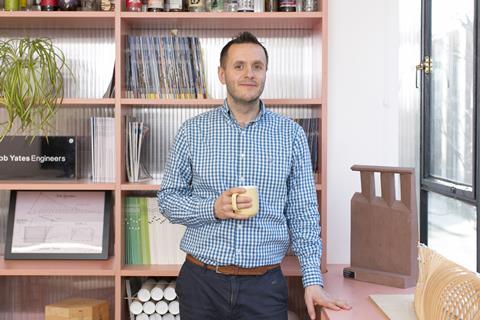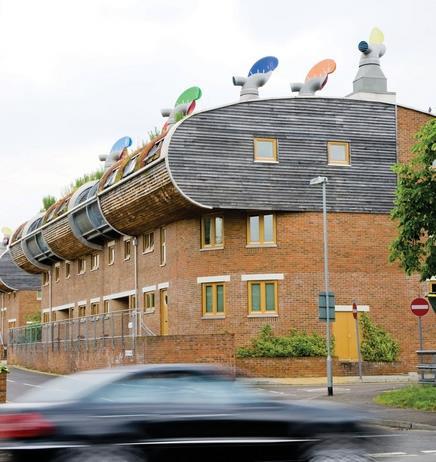Here’s how the embodied carbon savings of reusing - rather than recycling - materials such as steel could stack up

Last week, developer Fabrix announced that it had bought an existing steel frame from One Broadgate to be reused in upcoming developments. To me this is possibly the biggest news on low-carbon design in recent years.
The project proves that some hurdles involved in urban mining can be overcome and that circular economy projects can be delivered, funded, and insured. I truly hope that this unlocks the door for other developers to follow suit.
The urban mining of buildings is a true celebration of the circular economy and a low-carbon approach to design with structural steel. There are basic steps that need to be implemented throughout the design and construction process for urban mining to become an industry-wide phenomenon.
A building needs to be dismantled and all its components scheduled and stored for re-use. The components need to be tested and their properties certificated. This requires space and time, and a database where components can be found and bought. Importantly, assurance and warranties would be required to ensure that buildings can be designed and insured appropriately. Through this type of urban mining, the embodied carbon is kept to a minimum.
You can remove 500 tonnes CO2e from the atmosphere and provide a bigger building while placing materials back into the supply chain
A good example of urban mining is BedZED in Sutton (pictured), the first net zero village completed in 2002, in which it is claimed that 3,400 tonnes of construction materials were reused. Nearly all structural steel in the building was reclaimed from the refurbishment of Brighton railway station.

The British Constructional Steelwork Association (BCSA) is working on guidance for the purchase and reuse of steel. For the moment, however, clients, consultants, and contractors are still heavily relied upon to navigate their way through a series of tests and assurances to meet the criteria of insurers.
Reusing rather than recycling steel has the potential to significantly reduce the embodied carbon of the built environment. Steel is a woeful performer in terms of embodied carbon. Although it can be recycled with no harm done to its structural performance, the recycling process produces around 50% of the original CO2e of virgin steel again. Every time we recycle a piece of steel, we are increasing its carbon footprint.
So how could you mitigate this damage? The only way to start making a lower-carbon design is to reuse the structural steelwork for a replacement low-carbon building, for example a timber-framed building. This way we could sequester and store enough carbon to create an embodied carbon deficit if all steel components have 100% recycled content and no concrete is used on the floor plates.
Consider a standard office building, which is founded on piles and has a superstructure of a steel frame with composite slab. It is likely to create around 1200 tonnes of CO2e during the construction of the superstructure alone. The original embodied carbon has done its damage. We could, however, mine this building to place the constituent materials back into the supply chain.
Another advantage of this process is that by reusing the original foundations in the ground, the timber building could be 30-40% taller, because a steel frame with composite slab is between 30-40% heavier than an equivalent timber frame. If we considered an existing six-storey steel frame building which was being replaced by an eight-storey timber frame building, the embodied carbon would work out roughly as follows:
1. Recycle steelwork elements: 540 tonnes CO2e
2. Build new timber building: 450 tonnes CO2e
3. Sequestered carbon in timber: -1500 tonnes CO2e
Therefore, you can remove 500 tonnes CO2e from the atmosphere and provide a bigger building while placing materials back into the supply chain.
Another example for carbon advantages would be a hybrid steel and timber building which is created using the original steel frame and CLT (i.e. no concrete) floor plates and founded on the original piles. The carbon assessment might look like this:
1. Reuse steelwork elements: 150 tonnes CO2e
2. Build new timber building: 300 tonnes CO2e
3. Sequestered carbon in timber: -1250 tonnes CO2e
This could potentially represent a staggering net 800 tonnes of CO2e benefit.
These examples demonstrate that the approach of recycling steel works, but only if we replace existing steel-framed building stock with timber building stock to store the carbon. If we consider the number of steel frame buildings with composite concrete floors being erected in London, we must assume that most developers are perpetuating the issue of carbon increase but convincing themselves that they are using recycled content and therefore that must be ok. Trailblazers like Fabrix show, there is another way.
Tom Webster is a director at Webb Yates




























No comments yet